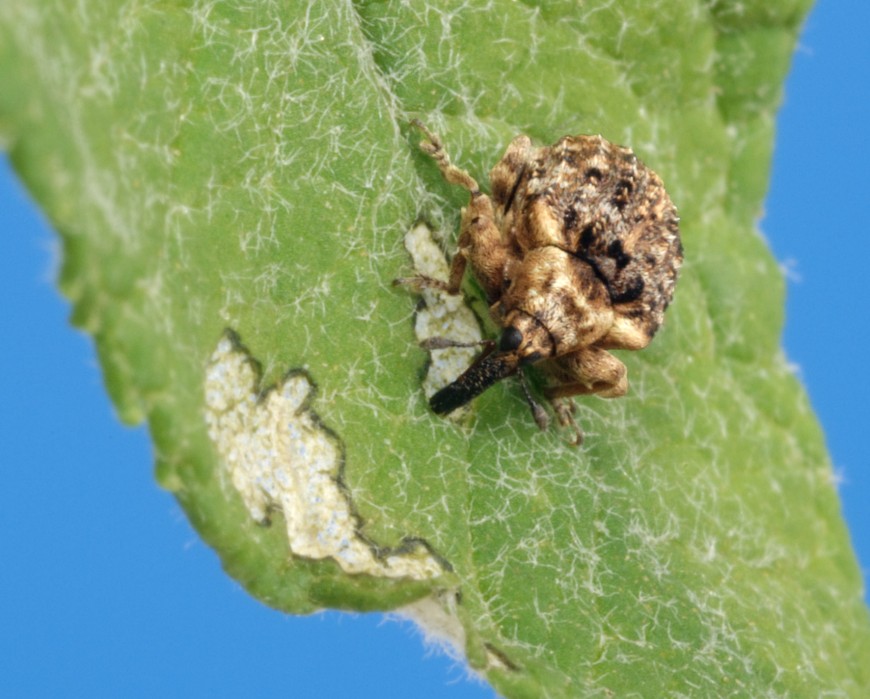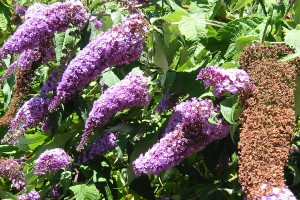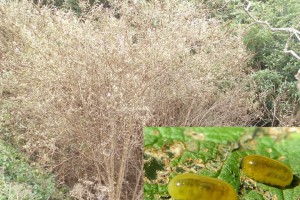Buddleia leaf weevil
History in New Zealand
The buddleia leaf weevil is native to China and a population was imported from Hunan into the Scion quarantine facility in Rotorua in 1993. Following host-testing, the leaf weevil was released in New Zealand in 2006. The first releases were made at a limited number of sites in commercial forests in the central North Island. It has since been released at over 30 sites in the North and South Islands and has established readily. The buddleia leaf weevil is the first biological control agent to be released for buddleia anywhere in the world.
How would I find them?
The best time to look for adult weevils is on sunny spring days when they can typically be found on leaves, and in leaf axils and growing tips. Adult beetles are small, about 4mm long, and brownish-grey with a long ‘nose’.
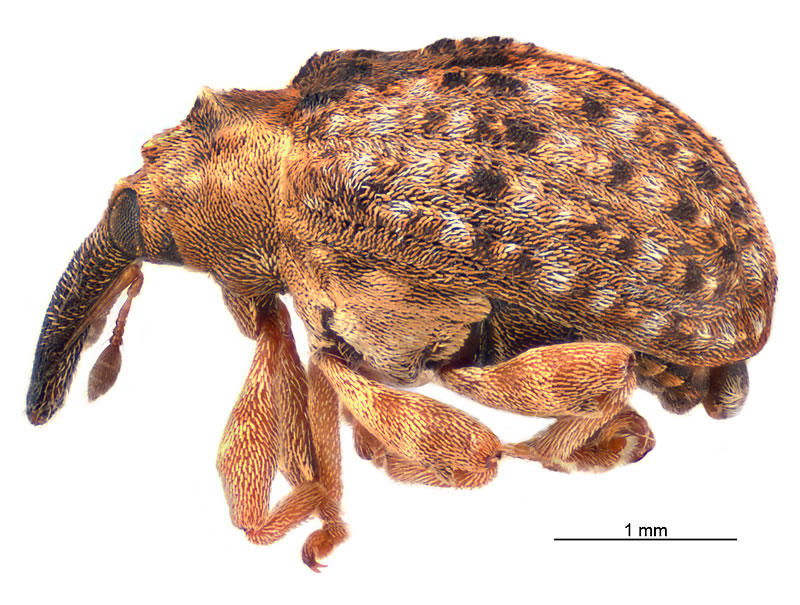
Image: buddleia leaf weevil (Cleopus japonicus) lateral view.
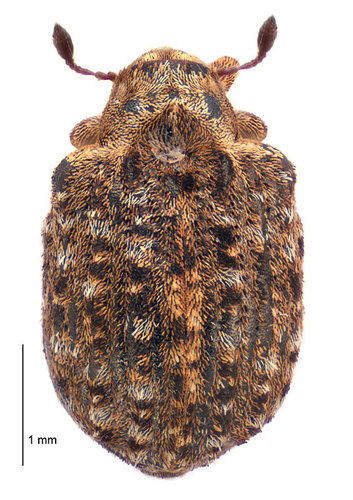
Image: buddleia leaf weevil (Cleopus japonicus) dorsal view.
Following a maturation period, female weevils mate and lay single eggs just under the leaf surface. Females can lay up to 20 eggs per day. You are unlikely to see the eggs as they are tiny, approximately 0.5mm in diameter, though the developing larva can be seen within the leaf if it is held up to the light.
Larvae are soft bodied and yellow to greenish in colour. They have a shiny, sticky mucous covering. Larvae move only short distances but due to being sticky, they can be transferred to new plants on animals and humans. Mature larvae spin oval brown cocoons where they pupate attached to the plant or in the leaf litter below.
Image: buddleia leaf weevil larvae.
Looking for the characteristic feeding damage is a good way to find adults and larvae. Another clue is the trail of slime and frass left behind as larvae move about on the leaf surface. Larvae can be found feeding on both the upper and lower surfaces of leaves.
Buddleia leaf weevils can live up to a year and have several overlapping generations per year. Adults are present most of the year but are harder to find in mid-summer or mid-winter, when they are less active and hide-away from extreme heat or severe cold. Larvae are present from around September to May. In some areas, high temperatures during summer may trigger adults to stop laying eggs causing a gap in larval presence in mid-summer.
How do they damage buddleia?
Both adults and larvae remove the upper surface of leaves, leaving the lower silvery epidermis intact. Adult feeding damage often forms a ragged hole in the leaf when the epidermis breaks. Leaves with extensive damage become silvery-brown, curl and drop to the ground. Heavily damaged plants can lose all of their leaves. When no suitable foliage remains on a plant, larvae will feed on the softer stems and flower buds.
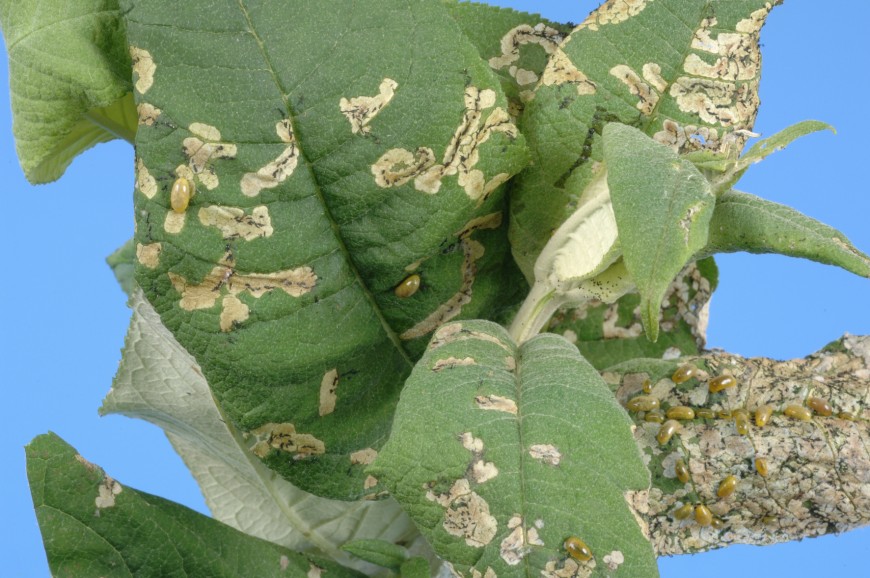
Image: buddleia leaf weevil larvae feeding damage.
Will they attack other plants?
No, it is extremely unlikely that the buddleia leaf weevil will damage anything other than buddleia. During testing, several other varieties of ornamental Buddleja species and two introduced weeds (Scrophularia auriculata and Verbascum virgatum) received minor attack but they are not preferred hosts and are unlikely to be attacked in a natural environment.
How effective are they?
The buddleia leaf weevil is proving to be effective in controlling buddleia. Observations at numerous sites indicate that once the weevil builds up to a high density, it will completely defoliate buddleia plants from late summer right through to spring, but it may take 3 years of this defoliation to reduce plant growth or kill plants completely.
Image: infestation of buddleia leaf weevils.
How can I get the most out of this agent?
Buddleia leaf weevils fly reasonably well but you can accelerate dispersal by moving adults from well-established sites to new areas.
How do I select a release site?
Read Guidelines for selecting release sites for biocontrol agents.
How do I collect them for release at other sites?
Buddleia leaf weevils are best collected as adults. Harvesting adults in spring to summer maximises the number of generations able to develop in a season, however, collecting in autumn takes advantage of the high numbers usually present at this time. Hold a beating tray or place a sheet of light-coloured material on the ground, beneath infested branches and strike the branches several times with a stout stick. When disturbed, adult weevils typically roll up and drop from the plant as an escape response so be careful not to bump the plant before you are ready. Tip the weevils collected into a ventilated container with scrunched-up paper towels or cut foliage and take to the new release site.
Larvae could also be moved to a new release site by harvesting infested branches and wedging this material into new buddleia plants. However, larvae can only move short distances, so it is very important that they are placed on a healthy plant with lots of foliage.
How do I manage the release sites?
Avoid any activities that will interfere with the leaf weevils. If it is absolutely necessary to apply herbicide, avoid spraying when larvae are present as they are the most susceptible life stage. There are typically few larvae present in January to early February so this time may be less disruptive to the weevil.

